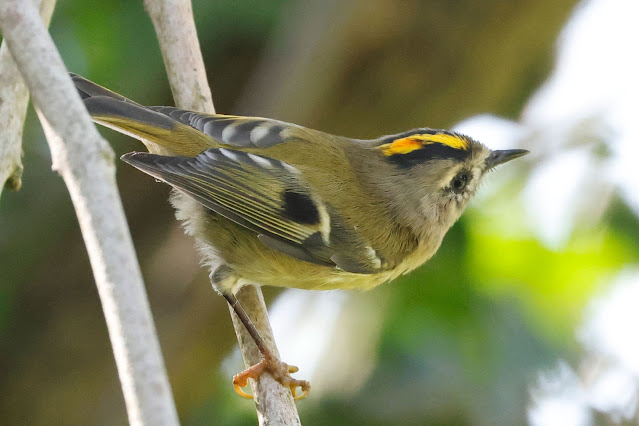It had been hot all week and we were fortunate that for once a holiday in the United Kingdom delivered good weather. Today though was due to be the hottest of the recent heatwave and the hottest day of year, in September, bizarre! An immature Turtle Dove had been found in the week around the RSPCA Ark buildings along Ranvilles Lane in Stubbington, there was a very good chance it was still present as it had been seen with Collared Doves and Woodpigeons. So it was that I met Ian by the old Crofton Church at 6:30, when hopefully it would be cool. As we walked across the scrubby field the sun was rising and already you could feel the heat.
There was little if any movement in the bushes, the sun not yet reaching them, so we walked around the field and then into the lane where the dove has been seen.
Turtle Doves nationally have declined due to farming practice, and shooting in the Mediterranean. In Hampshire up until a few years ago it was almost a dead cert to see them at Martin Down, but numbers there have dropped off over the last two years and this year I had only heard then.
As we came around the corner we could see a dove on the wires, but this was a Collared Dove. Ian then found the Turtle Dove on the same wires a little further away.
We waited and hoped it would return, but it didn't. So we decided to walk on and do a circuit around the area taking in Newlands Farm in the hope that the Little Owl was showing. A Buzzard sat in the middle of a stubble field along with a flock of Black-headed Gulls, in which there were about half a dozen Mediterranean Gulls.
The Little Owl was not showing, probably due to the six Herring Gulls sitting on the roof. We spent some time watching the bushes and had a good selection of warblers, Chiffchaff, Willow Warbler, Whitethroat, Blackcap and a Garden Warbler. A Spotted Flycatcher was a fly over.
We stopped a small pond to check the dragonflies. Along with a few Common Darters were two Migrant Hawkers, one of which posed nicely on one of the Reedmace leaves.
We walked back to the Ark, but there was no sign of the dove. We were told someone had seen it near the cemetery but our search turned up nothing. It was now very hot and we decided to move on, however we did stop for a while in the shade of the trees in the Old Cemetery where we had good views of a pair of Goldcrests.
We felt that the hides at Titchfield would be the coolest option, so drove the short distance to the reserve, the sea wall parking was not busy, a surprise considering the weather, and we checked in at the visitor centre.
Coming out I noticed a group of white blobs in distant trees up the valley, a closer look revealed them to be egrets and most probably Cattle Egrets as Little are not normally seen in larger numbers in trees at this time of day.
We opted for the Meon Shore Hide, looking north there would be a breeze and it would be out of direct sunshine.
The hide was quiet as was the Scrape although there was a Snipe feeding close in front of the hide.
So it was back to the waders, unusually some Dunlin present and this one close to the hide.
The Grey Heron was clearly hot panting the throat with bill open.
Once again the Snipe were happy feeding out in the open.
Common Sandpiper are still around, once again this one feeding close to the hide.
A one of two Green Sandpipers came close enough for a record shot.
It seems that the Snipe were more than happy to show and with the shallow water there were some wonderful reflections as this one fed around the island in front of the hide.




































No comments:
Post a Comment